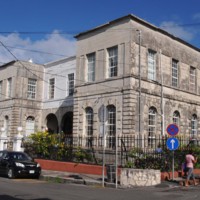
Museum of Antigua and Barbuda
Housed in the former courthouse of Antigua's capital, St John's, the Museum of Antigua and Barbuda opened in 1985. Managed by the Historical and Archaeological Society, it interprets the history of Antigua from the island's geological birth until its political independence in 1967. Collecting is central to the museum's ethos and it has developed a large collection of items relating to its local history through acquisitions and donations. It also has a digital records library with over 25,000 records available to browse.
The exhibits themselves trace the history of Antigua chronologically. The first gallery maps the geological development of the island using natural history specimen and artist interpretations alongside text panels. There are also displays that showcase the traditional crafts of the island, including basket weaving.
The second gallery then explores the arrival of the Europeans to the island and the development of the plantation economy fueled by the transatlantic slave trade. Here the displays examine what life was like on the plantations, using objects that highlight the brutal nature of enslavement, as well as archaeological samples that provide an insight into the everyday life of the enslaved. Some text panels provide information about instances of resistance, alongside images of supporting archival sources.
The final gallery explores how the island developed following the abolition and then the emancipation of the slave trade, two world wars and political independence. Here, objects are complemented with oral testimonies from local people.
The museum also has a gallery for temporary exhibitions focussing on different aspects of Antigua and Barbuda's local history. It also runs a programme of community events, and a series of education sessions for schools.
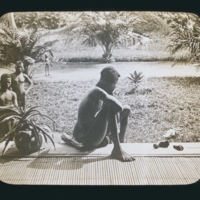
Nsala of Wala (2)
Nsala of Wala with the severed hand and foot of his five year old daughter murdered by ABIR militia. (Anglo-Belgian India Rubber company). This image formed part of the Harris Lantern Slide Collection. Under King Leopold II the Congo Free State used mass forced labour to extract rubber from the jungle for the European market. As consumer demand grew King Leopold II's private army - the Force Publique - used violent means to coerce the population into meeting quotas, including murder, mutilation, rape, village burning, starvation and hostage taking. Alice Seeley Harris and her husband Reverend John H. Harris were missionaries in the Congo Free State from the late 1890s. Alice produced a collection of images documenting the horrific abuses of the African rubber labourers. Her photographs are considered to be an important development in the history of humanitarian campaigning. The images were used in a number of publications. The Harrises also used the photographs to develop the Congo Atrocity Lantern Lecture which toured Britain and the the USA raising awareness of the issue of colonial abuses under King Leopold II's regime.Source: Antislavery International and Panos Pictures.
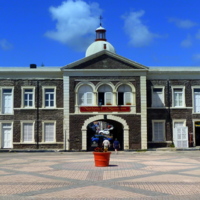
The National Museum of St Kitts
The National Museum of St Kitts is housed in the Old Treasury Building, built by the British colonial administration in 1894 and known as the 'gateway to Basseterre' due to its imposing size. The museum opened in 2002 and charts the history of St Kitts from its earliest, indigenous populations to its independence from colonial rule in 1983.
The museum has three permanent galleries which cover St Kitts' history in a chronological timeline making use of a small collection of artefacts, alongside images and text panels. The first gallery examines the indigenous populations of the island, alongside exhibits relating to natural history and ecology.
The second gallery explores the arrival of Europeans to the island and the development of slavery and the plantation economy. There are artefacts showcasing the brutal nature of enslavement, including an iron slave collar. It also explains the processes involved in the cultivation of sugar, as used on the plantations during the eighteenth and nineteenth centuries. It also provides a narrative of abolition and emancipation.
The final gallery examines the colonial governance of St Kitts post emancipation, through to independence from British rule in 1983.
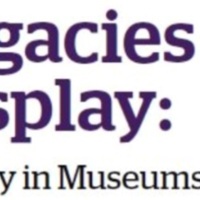
Pompey Museum of Slavery and Emancipation at Vendue House
The Pompey Museum is named after a courageous enslaved man who led a slave revolt from the Rolle Plantation on Steventon, Exuma, Bahamas. Vendue House, where the museum is located, was built in the 1790s and operated as a market place where enslaved people and other goods were sold during the nineteenth century. The house was opened as a one-room museum in 1992 and was redeveloped in 2014.
The museum is dedicated to the preservation and interpretation of the lived experience of enslaved people, particularly during transatlantic slavery, and its aftermath in The Bahamas. It features a small selection of objects and images that complement these themes. Following its redevelopment in 2014, the museum curated a powerful exhibition entitled 'Wade in The Water: Peter Mowell, the Last Slave Ship in The Bahamas' which charted the plight of the enslaved Africans on the slave ship that wrecked off Lynyard Cay in the Abacos in 1860.
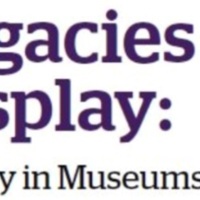
Hanover Museum
The Hanover Museum dates back to the eighteenth century, and is housed in a former slave prison. It was redeveloped in 2011 and now stands as an important symbol of resistance to the people of Jamaica. Situated in the small town of Lucea, between Montego Bay and Negril, the museum sits within a wider landscape of Georgian colonial architecture. Other buildings of historical significance include the nearby church and Fort Charlotte.
The museum houses a varied collection charting the development of the town from the period of plantation slavery to Jamaican independence from British rule. There are paintings, pottery and other artefacts that showcase what life was like for the enslaved. There are also instruments, including stocks, whips and shackles, that highlight the brutal nature of enslavement. In addition, the museum houses a significant collection of archival material, including plantation records and accounts, as well as an early, hand-drawn map of the harbour and surrounding area by Captain William Bligh.